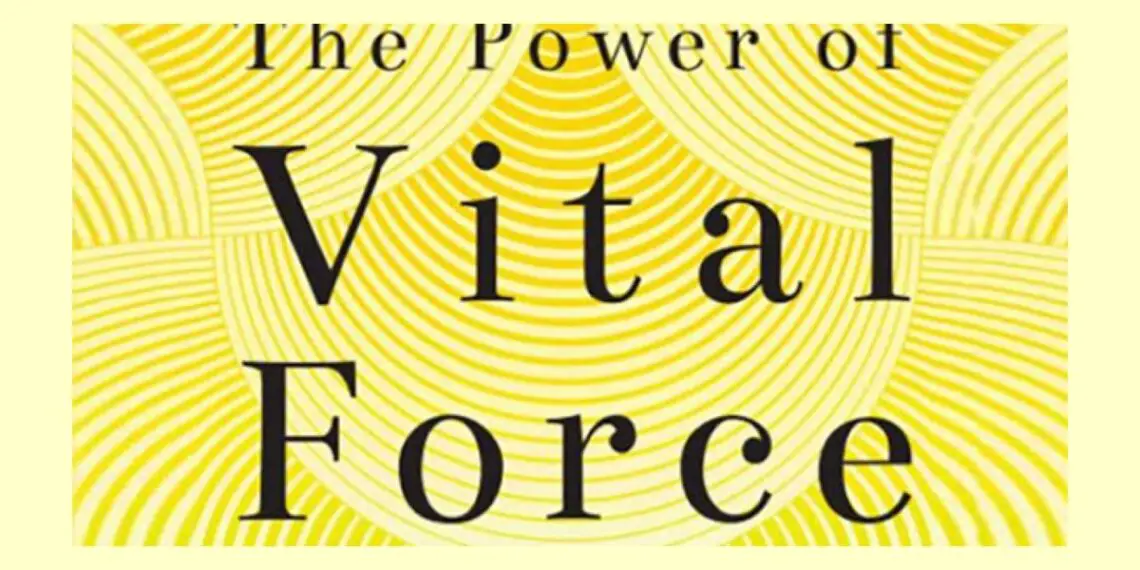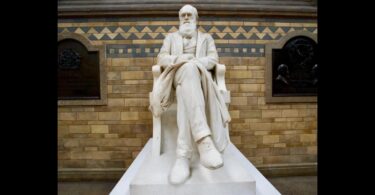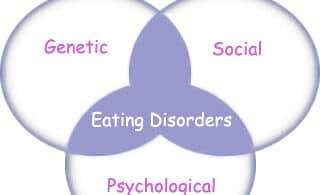Dear Mr. Verspoor,
Thank you for the clarity you’ve brought to your discussion of terminology in homeopathy. You have, in my humble opinion, a rare gift for communicating essentials, and I applaud your idea “…to create a glossary of terms that can then be used to provide the foundation for a scientific consideration, rather than simply views and opinions. If we are to have a fruitful dialogue, the terms we use must, at the very least, be understood by all.”
Language is key – but far too often it is used with imprecision.
I wonder if you could address the phrase “spirit-like” in Hahnemann’s work. In particular, I am wondering whether, in using this terminology, Hahnemann meant to imply that there were spiritual forces at work within the homeopathic remedy, or whether he chose this term simply because, at the time, there did not yet exist a suitable language within the “hard” sciences, like physics, to describe the “evanescent” qualities he had observed in the action of these remedies.
Neil D. Shere, LCSW, BCD
Science Editor
Homeopathy for Everyone
Dear Neil,
This issue is very complex and goes to the heart of what is unique about Hahnemann and the dynamic system of thought of which he is a part. The false dichotomy created in Western philosophy between spirit and matter, with spirit also then reduced to religion, and matter to science, which is enshrined in Kant’s paradigm, is a difficult one to overcome. Hahnemann and the Dynamic System offers a third way through this seeming paradox or chasm.
The polarity in Hahnemann is between Spirit and Dynamis. Both are supersensible, one spiritual and one “spirit-like.” Life energy is energy before matter, something that you have to go to the scientific work of Wilhelm Reich to study, as this, too, is ignored and belittled in material science. This is what Reich called orgone energy. The energy of the remedies is also energy before matter. “Animal magnetism” is essentially this orgone energy within a person. It has the power of drawing other life energy to itself, much as magnetic energy (energy after matter) does, hence the analogy, but not similarity.
The problem with so-called classical or conventional homeopathy is that they are mystics in their use of the term vital force, and get caught up in mystical language, none of which Hahnemann used – he was very scientific in his method, very Baconian in that regard.
When Hahnemann uses the term spirit-like, he means the dynamic energy or life/orgone energy before matter, which is spirit-like in that it is supersensible, not physical, yet also not spiritual.
I hope that this helps. If you have any further questions, please feel free to ask.
Rudi
Dear Rudi –
Thanks so much for your thoughtful reply. It is most interesting to me. Unless I’m mistaken, what I take away from it is primarily that Hahnemann was a “materialist.” This is most clearly reinforced, from what I have seen, in his remarks in footnote 1 to Aph. 280 (5th edition), when he speaks of
“A substance divided into ever so many parts must still contain in its smallest conceivable parts always some of this substance, and that the smallest conceivable part does not cease to be some of this substance and cannot possibly become nothing; – let them, if they are capable of being taught, hear from natural philosophers that there are enormously, powerful things (forces) which are perfectly destitute of weight”.
What you have called “pre-matter” to me is suggestive of “elementary particles,” the quantum vacuum, the epola latticework, etc. In other words: physics – known, unknown, conjectured, sound or wildly speculative. But physics throughout.
If this is a correct reading of your remarks, then I am happy with them – but I think there are many in the homeopathic community who will feel differently. Thanks for your perspective on this.
Best Regards
Neil
Dear Neil,
Hahnemann was neither a materialist, nor a mystic, the false polarity forced by the dominance of the Kantian world-view, but a dynamist. There is a certain borderland between this and quantum physics, but the quantum world can never really leave the material realm except to go into a form of mysticism, as witnessed by the works of David Bohm for example, or those of more modern writers. Classical homeopathy, in calling Hahnemann a “vitalist” is entering the mystical realm, just the other pole to the abstractions of modern material science, whether classical or quantum (atoms, photons, various sub-atomic particles, quarks, etc.), what Coleridge, who provides another foundation to the methodology of the dynamic system, called “the chance whirlings of unproductive particles.”
Substance is not material, but what used to be called etheric, from which came that famous ether of the medieval and early modern natural science phase – a “thing” in the Kantian sense without material body, but still filling space and time.
The modern mind, essentially the activity of the intellect, which divides and separates in order to comprehend, is only really capable of understanding the sense world, as Kant well knew when he confined scientific knowledge (through the intellect, mind you) to that realm (but then only the outer appearances – which is a counterfeit form of objective knowing that leads only to abstractions, of which quantum physics is replete). To understand the inner content, the super-sensible realm of matter (matter being not the polarity to spirit, but the meeting place of the spiritual and the natural realms in terms of manifestation in the sense world) requires a different form of thinking, which German calls “denken,” a kind of thinking that has a different logic to the syllogistic, formal logic of the intellect given to us by Aristotle, the logic of identity or “a, not b,” or “either/or logic.” This is a bio or physio-logic that works on different laws and principles, namely of functional pairs, either of identity or opposities, but here both exist at the same time and in the same space (etheric space) in an interpenetrating way. For example, in the physiologic or bio-physics of the dynamic system, gravity exists, but it can only exist in a polarity with another force called levity. Light can only exist to the extent there is dark, etc.
What Hahnemann is referring to is a unity that is similar to a hologram, wherein each part contains the whole, such that adding more parts only makes the whole clearer, but does not increase the whole. Some parts give a sharper image of the whole and are more valuable this way. This is different from the whole of material science wherein the whole is the sum of the parts, or that of mysticism where the whole is greater than the sum of the parts (vitalism), which latter was properly excoriated and exorcised from science in the 19th century. The whole that is the sum of the parts is a valid whole but only applies to the mechanical world, not the living or dynamic world. Modern medicine is based on this mechanical concept of the whole, such that the human being is approached as a machine to be parceled out to specialists and to be moved by chemicals or saved by the mechanical removal or replacement of organs. The living element is either assumed or dismissed depending on need (dismissed in therapeutics, yet assumed in the healing process that follows).
Elementary particles are still matter, even if elementary in nature. Energy before matter is alive, dynamic and exists before any form of physics linked to the material realm. There is a form of physics here, but it is different from the quantum world, indeed predates it. But this requires the logic of the bio-physical world, the functional logic as founded by Wilhelm Reich, the pioneer in this realm
This is a topic as vast as the universe and worthy of much greater exploration, yet this would in itself take a huge book. Maybe one day this can be laid out with reference to those who have founded and developed the dynamic system of thought and provided the groundwork for a true science of nature, and a science of spirit.
Sincerely,
Rudi
Dear Rudi,
Thank you for that clarification, though I am forced to admit that it throws me back into my original dilemma, of being unclear whether Hahnemann could be described as scientific in his thinking. What you seem to underscore, is that in materialism, even fundamental particles are still particles, while in a dynamic (dynamis) system, there is something “before” or “beyond” material particles that somehow sets it apart from the mechanistic reductionism that, as you and many others see it, characterizes the materialistic paradigm.
But by that argument, Hahnemann’s choice of the word “spirit-like” would suggest his belief in something beyond the purely physical, to supersensible or super-ordinate processes.
I have at least two problems with that approach, assuming that I understand you correctly:
First, materialism is not so simple-mindedly mechanistic, as to exclude dynamics and, to coin a phrase, “non-particulate” objects or processes. Although I understand I may be blurring the definition of dynamis here, my justification is in the fact that, from a materialistic point of view, something is governed by laws and is therefore, in principle, measurable and predictable – or it is not. It seems to me that any other definition than this, applied to dynamis, would make of Hahnemann, and of yourself, essentially a spiritualist.
Throughout history, physical science has consistently been able to reveal the material basis of events and processes that earlier had appeared, to our uncomprehending gaze, to be chance occurrences or supernatural phenomena. Yet, each time science advanced the frontier of knowledge, the human gaze turned to the next unexplainable circumstance, and concluded that here, at last, was an event or process that stood beyond the grasp of science, pointing to “deeper” or more “profound” workings of the universe.
But I see no reason to think that we are so fortunate in our own time to have reached the final boundary, beyond which science can not penetrate, or – to acknowledge Bohr’s “victory” in his famous debate with Einstein – beyond which physical laws cease to operate, and chance, spirit, or even dynamis takes the stage.
It is true that to sustain the scientific paradigm we must over time modify the meanings we give to certain words, and I sometimes think this is where confusion enters. For in modern usage the material universe encompasses objects and processes that in the past, as I tried to suggest in my opening question to you, were considered to occupy some other, spirit-like plane. It is this advance of knowledge, and corresponding modification of language, that makes it possible to describe that table, at which you are sitting, as a material object, even though we know today that it is by far, in its largest measure, empty space.
By this standard, energy is certainly a part of the material universe. Similarly, there is an animating force, a dynamis, that drives all activity in the universe – from the burning cauldron of a star to the laconic complaint of a winter storm. I would venture to suggest, this dynamis characterizes existence-as-a-whole, not merely its organic crust. And, when someone refers to homeopathy, as though revealing a great secret, as an “energy medicine,” that seems to me to be not so remarkable a thing: “Yes”, I would reply, “like other forms of medicine, homeopathy utilizes all of the resources of the material universe, including energy”.
Second, I would propose to you the idea that energy is itself part of the material universe, subject to exacting laws of nature: in short, the issue is not whether a particle, pre-particle, force, or energic wave is defined as “material” in the narrowest sense, but whether these objects and processes and “things” (whatever their ultimate nature) are a part of the natural scheme, whose behavior is governed and limited by natural law. In that context, particles and waves and pre-matter are all the apt object of study in physics, and “supersensible” resolves to “difficult to perceive or measure”, but not to “otherworldly”.
I may have it wrong, but when I see references like this, to energy medicine, or dynamis, it always leaves the distinct impression that the speaker feels that here there is a higher order process going on, a process that is (usually, explicitly) free of the bonds of materialism (or “determinism”). In classical physics, presently dominated by quantum theory, this motive is embodied in the idea of chance events, unobservable processes within the inaccessible reaches of the quantum vacuum. But this, in my view, is only the latest, in a long series of “scientific” efforts, to fulfill man’s seemingly inextinguishable desire to escape the prison of materialism. In short, it represents evidence of our unending search for an alternative to mortality.
Best Wishes,
Neil
Dear Neil,
The main issue that must be faced it seems is what exactly constitutes what we can term science. The essence of Kant’s paradigm is that scientific, that is, objective, knowledge is only possible as regards the sense world, or what we might also term the natural world, but then only the outer form, what Bacon termed natura naturata, or the world of appearances. Thus, this knowledge is objective on the one hand, but at the same time limited to knowledge about the outer form of things, not their inner, living content. In this science, it is the sense data and experience that counts (but then only for the outer part of the sense world). From this perspective, it is material science as opposed to a true natural science. That there is a tendency to turn what is purely a material science into a reductionistic system that is more mechanical is quite obvious, and it is this reductionism that tends to dominate medicine and science, though it is not there for those who care to think, such as the prominent quantum physicists and those working at the frontier of material science.
If we accept along with Bacon and others that there is also another world beyond that available and open to the sense organs, that of natura naturans, or the inner content and meaning of things, it is a legitimate question whether or not a science of this world is possible. Kant would answer no, but the epistemological foundation of the dynamic system of thought would answer yes. However, the dynamic system sets out that knowledge of the super-sensible world cannot be had simply by expanding the organs and methods of the material into the immaterial, other than on the basis for apparent contradictions, abstractions and absurdities. To go into the supersensible realm requires the activation of other, more inner, not visible organs of knowing, such as used by Goethe for example, what in German is called the Gemüt.
If we accept the possibility that there can be an objective knowledge of the super-sensible world that is not dependent on sense data, but relies on what Kant called Pure Reason, or sense-free cognition, then Hahnemann’s dynamic understanding of disease and remediation is scientific. Hahnemann did not have the terminology to describe what he was experiencing, but he understood that the inner world of natural things was not spiritual, but spirit-like in that it was beyond the sense world and the world of cognition due to sense data. This in German is called kennen (inner or intimate knowing) rather than wissen (knowing of outer forms), and involves denken (cognition using the etheric body) rather than sinnen (which uses the physical body). Of course, now we come to terms that go beyond material science, and certainly beyond what the medical section of that science would accept, that is the reality of an etheric body on its own, as opposed to something created by the ‘chance whirlings of unproductive particles” as Coleridge put it with his characteristic flair for words.
Yes, the dynamic world is beyond and distinct from that of matter, and holds, as did Wilhelm Reich after numerous experiments, that there is an order of being beyond matter, or the sense world, one in the direction of spirit and one in the direction of what Goethe called wesen or dynamis.
While we cannot resolve the epistemological issues involved here, it is important to see that Hahnemann was not a materialist nor a mystic. He was operating within Kant’s realm of practical reason but on the basis of a real understanding of the dynamic world to create a system of medicine that can go beyond the physical world to cure disease. The essence of his discovery is that disease is not due to something physical, but is a super-sensible reality that requires medicines that are themselves of that world.
I hope that this adds some clarity rather than further confusion.
Rudi
– THE END –




